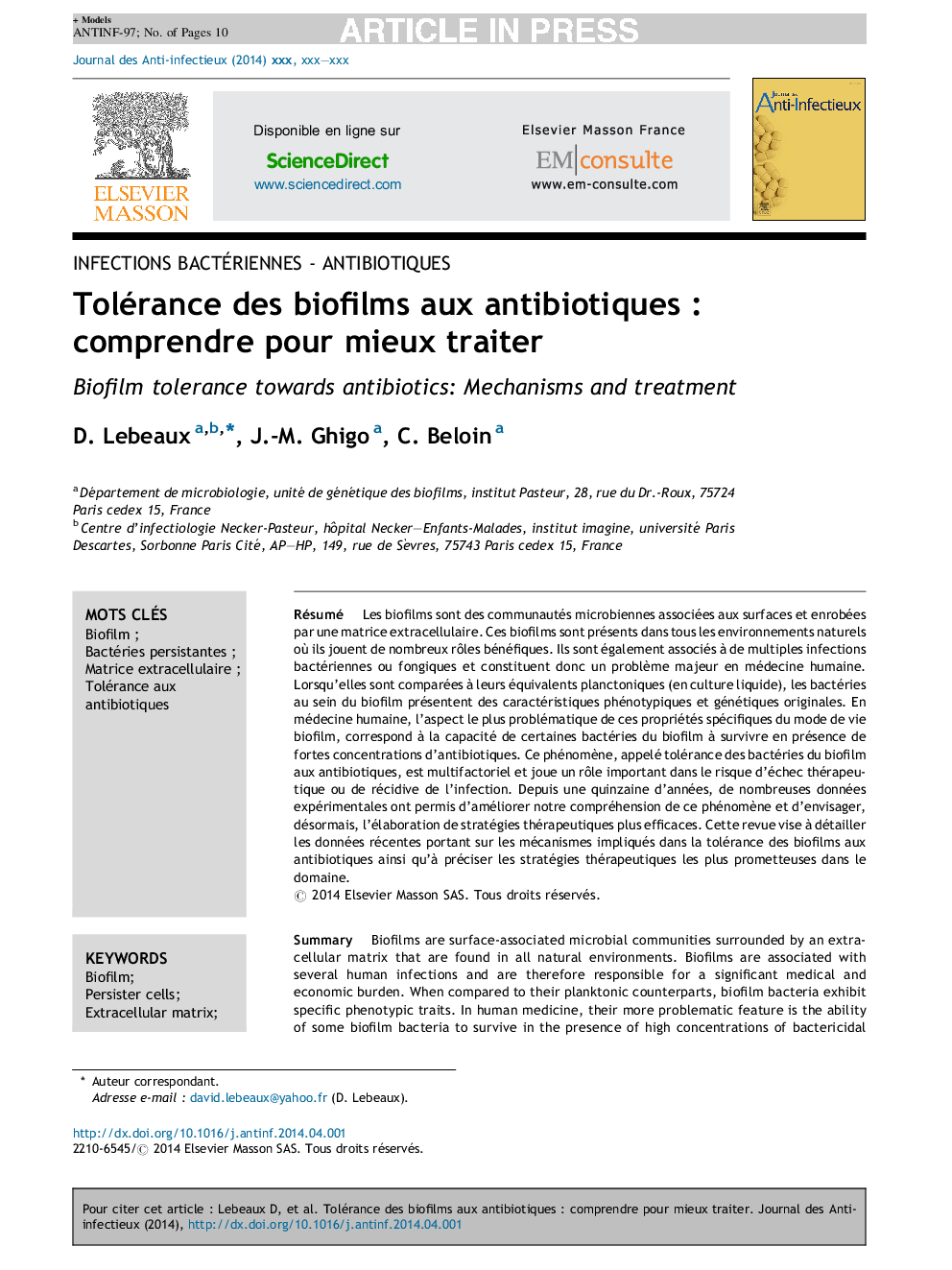| Article ID | Journal | Published Year | Pages | File Type |
|---|---|---|---|---|
| 3405338 | Journal des Anti-infectieux | 2014 | 10 Pages |
Abstract
Biofilms are surface-associated microbial communities surrounded by an extracellular matrix that are found in all natural environments. Biofilms are associated with several human infections and are therefore responsible for a significant medical and economic burden. When compared to their planktonic counterparts, biofilm bacteria exhibit specific phenotypic traits. In human medicine, their more problematic feature is the ability of some biofilm bacteria to survive in the presence of high concentrations of bactericidal antibiotics. This characteristic, called tolerance towards antibiotics, is multifactorial and plays a major role in the risk of infection relapse or antibiotic failure. Recently, several studies improved our understanding of the tolerance of biofilms towards antibiotics and led to propose original therapeutic strategies to treat biofilm-related infections. This review presents our current understanding of the mechanisms involved in the tolerance of biofilm towards antibiotics and describes how recent progress led to design original and efficient strategies to eradicate biofilm-related infections.
Related Topics
Health Sciences
Medicine and Dentistry
Infectious Diseases
Authors
D. Lebeaux, J.-M. Ghigo, C. Beloin,
